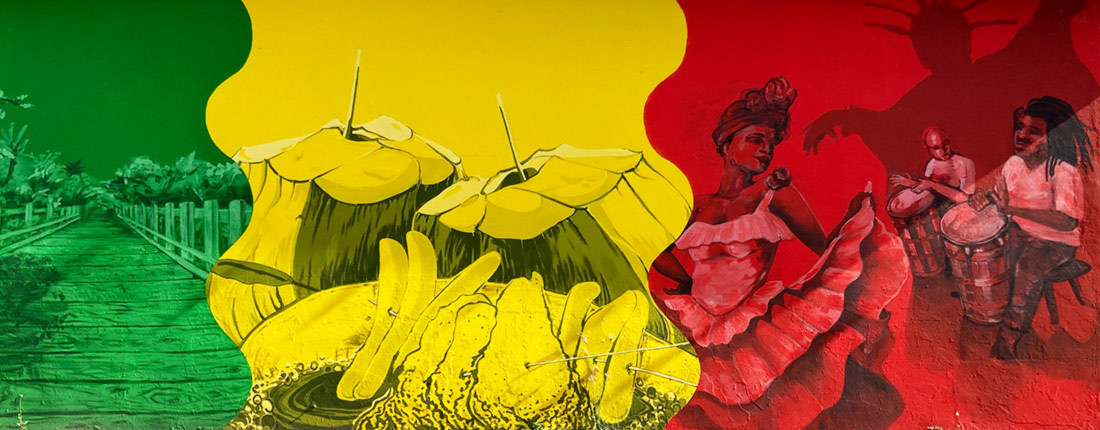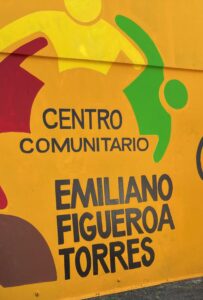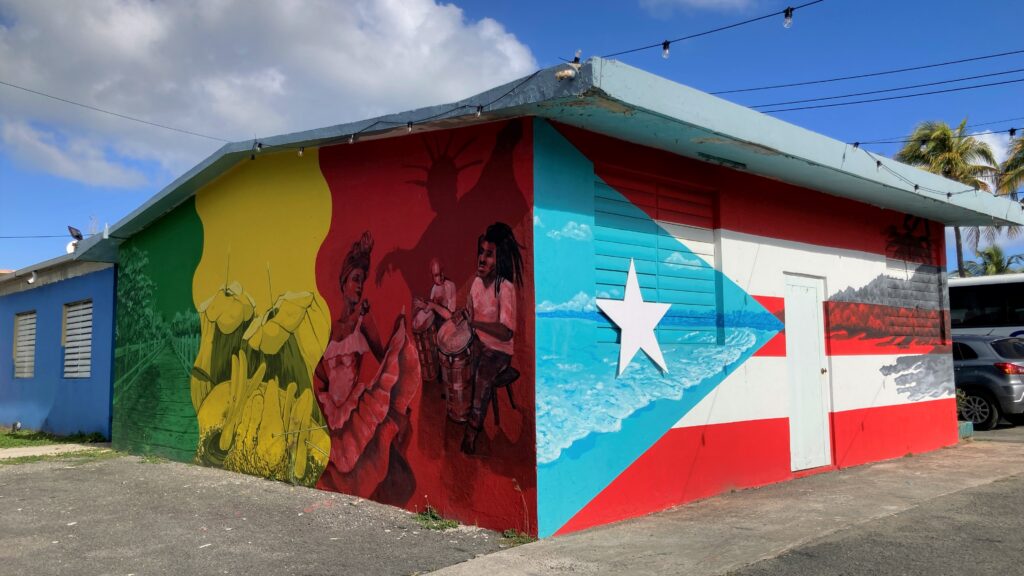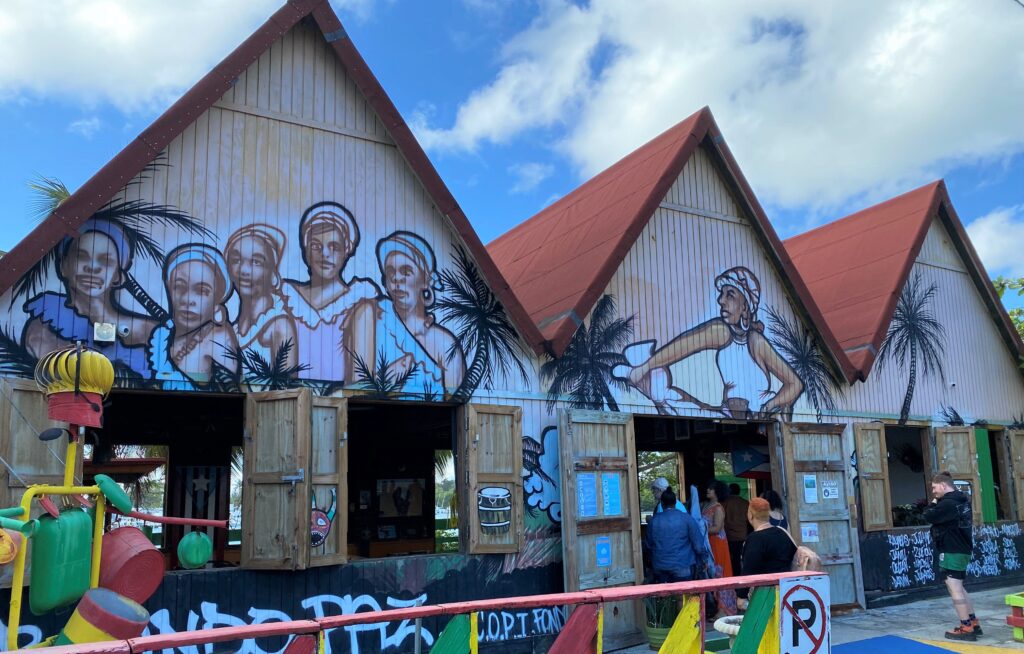Creative Placemaking in Loíza, Puerto Rico
June 22, 2023

At the beginning of March, the 2022-23 Community Revitalization Fellowship (CRF) cohort travelled to Loíza, Puerto Rico for their second learning exchange. These learning exchanges, which include technical and leadership training, are an opportunity for the fellows to learn in and from each other’s communities and tour creative placemaking and revitalization projects.
During these exchanges, fellows also learn about the local history and policies that contributed to the proliferation of vacant, abandoned, and deteriorated properties in each city.
In 2016, the government shuttered a large number of public schools across Puerto Rico, leaving hundreds of vacant school buildings as a result. When Hurricanes Irma and Maria hit in 2017, Puerto Rico’s vacant, abandoned, and deteriorated property crisis grew exponentially. Loíza residents, like the grassroots leaders participating in CRF, have worked hard to reclaim some of these properties as sites of community and culture.
Many of these vacant properties are located on prime beachfront real estate in an economy that relies heavily on tourism. However, locals lamented that instead of turning the properties into projects that benefit the community—or even proactively seeking out investments to turn them into tourist attractions—the government has allowed these buildings in their possession to languish.
In many disinvested communities, the people doing creative placemaking step up to be the responsible caretakers of a long-abandoned property needs—often before getting formal permission to do so.
“We were tired of seeing these buildings deteriorate and bring our community down,” said CRF Fellow Tanisha Gaspar. “This land is ours and we wanted to show that it was important to us by treating it with the respect our community deserves.”
Centro Comunitario Emiliano Figueroa Torres is a vacant school that the CRF fellows from Puerto Rico have repurposed as a community center. Gaspar’s family had been attending Emiliano for multiple generations before it closed, so keeping the school site within the community and the people who had the connection to it was important to her.
Thanks to the work of the CRF fellows, Emiliano once again serves the community. As a multi-building campus with kitchen and classroom spaces, the revitalized school hosts many community offerings: it serves as a conference center, early childhood education space, and community kitchen. Still other spaces in development: it will be the site of a future Bomba dance studio.
The fellows have transformed the school inside and out—CRF fellow Ingrid Pérez, an artist, covered the school buildings in murals that reflect local culture.
Over the course of three days, the fellows also toured other creative placemaking projects. Corporación Piñones se Integra (COPI) is a community space in Piñones that offers education and activities around culture, justice, and conservation to residents and visitors. El Ancón de Loíza is a gallery and historic site which preserves the space where the barge used to cross Rio Grande de Loíza. La Junta Comunitaria de Parcelas Suarez is another abandoned school building (Escuela Goyín Lanzó) turned community center for early childhood education.
Part of what the fellows—and other residents at their respective creative placemaking projects—are working to preserve is Loíza’s rich Afro-Puerto Rican history. During the 16th century, Africans from the Yoruba tribe, who were brought to the island as enslaved people. Those who were able to escape from enslavement settled in and established the community of Loíza. Today the town has the largest Black population in Puerto Rico. The Loíza fellows all shared the importance of cultural preservation. Artist Ingrid Pérez said, “I didn’t realize that I was doing creative placemaking—I just called it being in the community and creating culture, how I do community development.”
CRF fellows from Syracuse and the BEN region echoed that, while their communities may look different, the mission was the same: to preserve and revitalize the neighborhoods for the people who’ve lived for generations. They found solidarity in seeing a fellow community of artists, grassroots leaders, and community activists do a lot with very little.
“With every class of CRF fellows, the goal is not the visit itself—it’s the side conversations we hear our fellows having,” said Justin Godard, Associate Director of National Leadership and Education at Community Progress. “It’s the joy of seeing people get inspired by a project halfway across the country, and immediately start asking questions to figure out how they might adapt that project for their community.”
Get the latest tools, resources, and educational opportunities to help you end systemic vacancy, delivered to your inbox.




